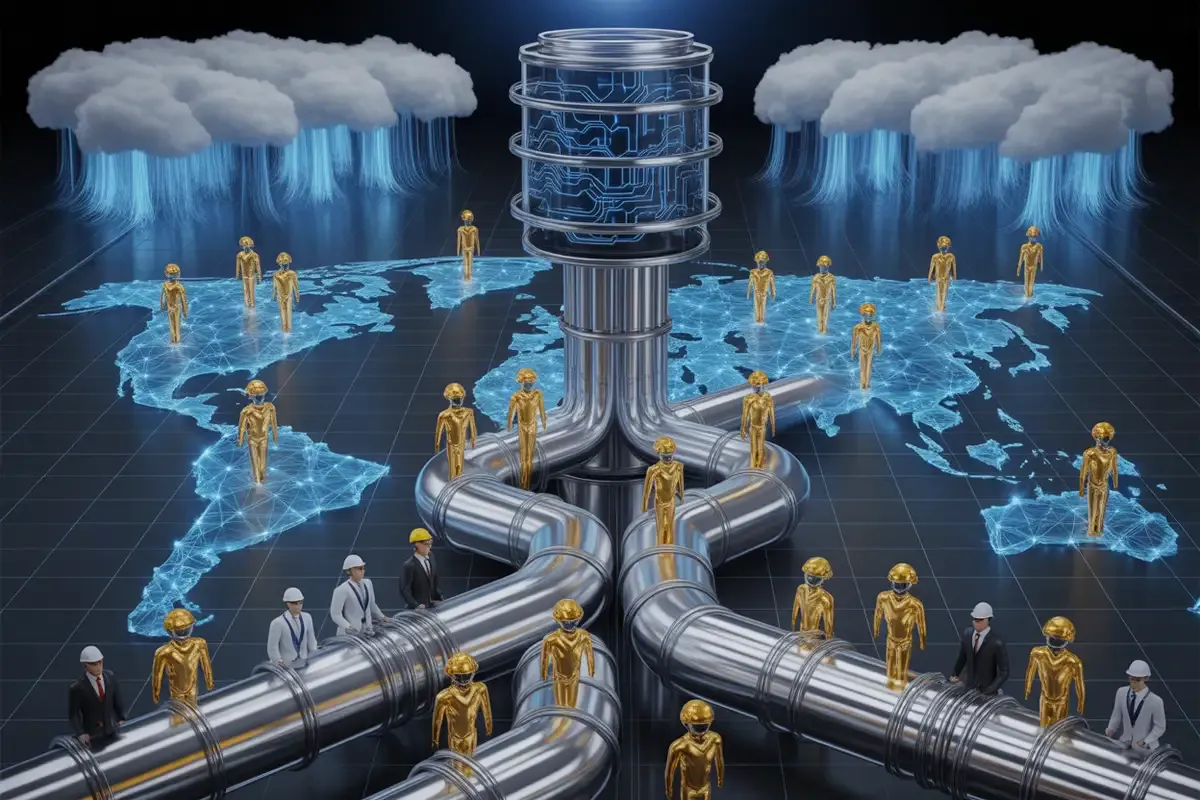AI News
Deloitte’s 470,000-person Claude rollout turns Anthropic’s biggest deal into a distribution machine
Anthropic's 470,000-employee Deloitte deal isn't a software contract—it's a distribution machine. By embedding Claude inside a Big Four consultancy, Anthropic gains reach into 90% of Fortune 500 boardrooms while Deloitte builds billable AI expertise.
Scale meets compliance in a race against OpenAI and Google.
Anthropic’s largest enterprise rollout isn’t a software contract. It’s a systems-integration play, wrapped in certification, inside a Big Four consultancy. Deloitte says it will deploy Claude to more than 470,000 employees across 150+ countries, positioning the firm as both customer and channel for pushing the model into client work. The move shifts AI from pilot theater to production plumbing.
Deloitte is standing up a Claude Center of Excellence and a formal program to certify 15,000 practitioners on the model—implementation frameworks, playbooks, and support baked in. That’s consulting infrastructure, not a seat-based SaaS deal. It’s designed to make teams productive and keep deployments from stalling in compliance or change-management purgatory.
The Strategic Picture
• Anthropic deploys Claude to 470,000 Deloitte employees across 150+ countries, creating a Center of Excellence with 15,000 certified practitioners
• Partnership transforms Big Four consultancy into distribution channel reaching 90% of Fortune 500, with custom implementations for regulated industries
• Enterprise AI competition shifts from product features to integration depth—trained staff and compliance frameworks create switching costs rivals can't match
• Single deployment larger than most vendors' total customer bases signals enterprise deals outweigh consumer adoption in AI durability race
What’s actually new
The alliance dates to 2024, but the scope is different: global access for staff, role-specific configurations (“personas”), and a deeper push into regulated industries. The promise is less “chatbot for everyone” and more enterprise controls that satisfy auditors and risk officers in finance, health, and the public sector. This is where deals live or die.
Timing matters. In September, Anthropic closed $13 billion at a $183 billion post-money valuation, launched Claude Sonnet 4.5 as its flagship coding/agent model, and committed to tripling its international workforce. Taken together, that signals a go-to-market built around heavy, hands-on enterprise adoption rather than viral consumer growth. The cash pays for it. The hiring sustains it. The model release creates momentum.
The distribution calculus
Deloitte already serves nearly 90% of the Fortune Global 500. That’s not just reach; it’s embedded sales coverage with budget authority in the room. For Anthropic, one systems integrator seeds hundreds of accounts at once—complete with reference architectures and certified staff who recommend Claude by default. It’s the classic “own the channel” play, updated for AI.
For Deloitte, credibility now hinges on using what it sells. Internal deployment gives consultants live sandboxes, benchmarks, and artifacts they can walk into client meetings. It also sets up billable follow-ons: persona design, red-teaming, data-guardrail tuning, and agent workflow rewrites. That’s recurring revenue with switching costs baked in. It’s sticky.
Enterprise AI vs. consumer hype
Anthropic now touts a six-figure enterprise customer count and a fast-rising run-rate, but this single Deloitte engagement is larger than many vendors’ entire installed bases by seat count. It underscores the central truth of 2025: a handful of heavyweight enterprise wins can outweigh mass-market buzz, as long as you can deliver controls, throughput, and support at scale. That’s the harder business—and the more durable one.
The Center of Excellence model reinforces that durability. When 15,000 people are trained, workflows are rebuilt, and risk sign-offs depend on a specific provider’s guarantees, procurement can’t swap vendors with a pricing email. Rival models might look cheaper per token; they won’t be cheaper to replace.
Compliance as moat
Regulated industries need audit trails, data residency, policy enforcement, and explainability that legal teams can defend. Anthropic’s “safety-first” posture began as philosophy; it’s now a commercial wedge. If Deloitte can ship reference implementations that pass bank and hospital scrutiny, procurement conversations change from “Can we?” to “How fast?” That’s a competitive trap for general-purpose chatbots with thin governance layers.
The implementation question
Rolling out to 470,000 people is not a press-release task. It’s change management: role scoping, red-team testing, access control, cost guardrails, and steady training. Expect Deloitte to start with high-leverage lanes—tax research, code generation, proposal drafts—then graduate to agentic workflows that touch client data. The payoff is big. The blast radius of mistakes is bigger. Move carefully.
What to watch next
Three signals will show whether this is template or outlier. First, seat activation: how many people move beyond novelty to weekly use. Second, case studies: regulated clients citing measurable gains with named controls. Third, copycats: whether the other Big Four formalize model-specific COEs or double down on “bring your own LLM.” If Deloitte’s flywheel spins, expect a land-grab for channels, not just features.
Why this matters:
- Enterprise AI distribution is shifting to integrators. The winner won’t just have the best model; they’ll own the consultants who standardize it inside Fortune-scale workflows.
- Compliance is becoming the moat. Reference deployments that satisfy regulators will beat flashy demos, especially where data risk—not novelty—drives buying.
✨
Stop doomscrolling AI Twitter.
Get the summary free. Every morning.
❓ Frequently Asked Questions
Q: How does Anthropic's Deloitte deal compare to OpenAI's enterprise strategy?
A: OpenAI focuses on broad adoption through ChatGPT Enterprise and API access across many companies. Anthropic's betting on deep integration with fewer partners—embedding inside consulting firms that touch hundreds of clients. OpenAI chases 200+ million weekly consumer users; Anthropic wants enterprises willing to train thousands of staff and build custom workflows. Different distribution models for the same market.
Q: What does Deloitte's Claude Center of Excellence actually do?
A: It's an internal support team that builds implementation frameworks, develops role-specific configurations, troubleshoots technical issues, and creates reusable templates for client deployments. Think of it as combining IT help desk, solution architecture, and change management—designed to prevent AI pilots from stalling in procurement or compliance review. The 15,000 certified practitioners staff this operation across Deloitte's global network.
Q: Why train exactly 15,000 people when Deloitte has 470,000 employees?
A: Those 15,000 become implementation specialists, not just users. They're concentrated in client-facing roles—consultants, developers, industry experts—who'll design Claude deployments for external customers. The remaining 455,000 employees use Claude for internal productivity. It's the difference between training everyone to drive versus training mechanics to fix cars. The mechanics enable scale; the drivers just use it.
Q: Can Deloitte still use ChatGPT, Gemini, or other AI models?
A: Neither company disclosed exclusivity terms. Deloitte likely retains flexibility to use multiple models—enterprises rarely commit to single vendors for critical infrastructure. However, building a Center of Excellence and certifying 15,000 people creates practical lock-in. When staff are trained, workflows are standardized, and compliance approvals hinge on Claude-specific controls, switching costs rise sharply regardless of contract language.
Q: What are Claude "personas" in this context?
A: Custom configurations of Claude tailored for specific job functions—different prompts, knowledge bases, permissions, and output formats. A tax accountant's persona might prioritize regulation lookup and citation accuracy. A software developer's persona emphasizes code generation with security checks. An auditor's persona focuses on data analysis with compliance guardrails. Same underlying model, different interfaces and constraints for different workflows.







